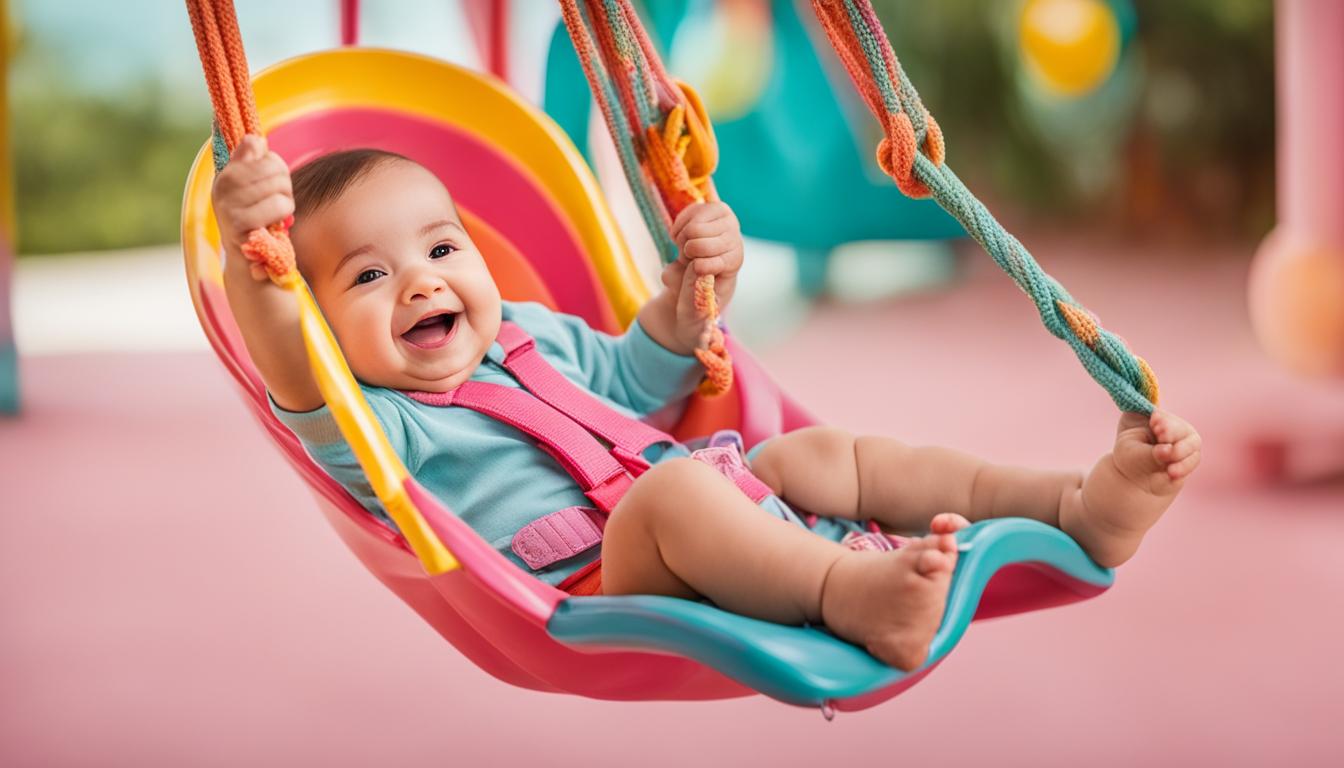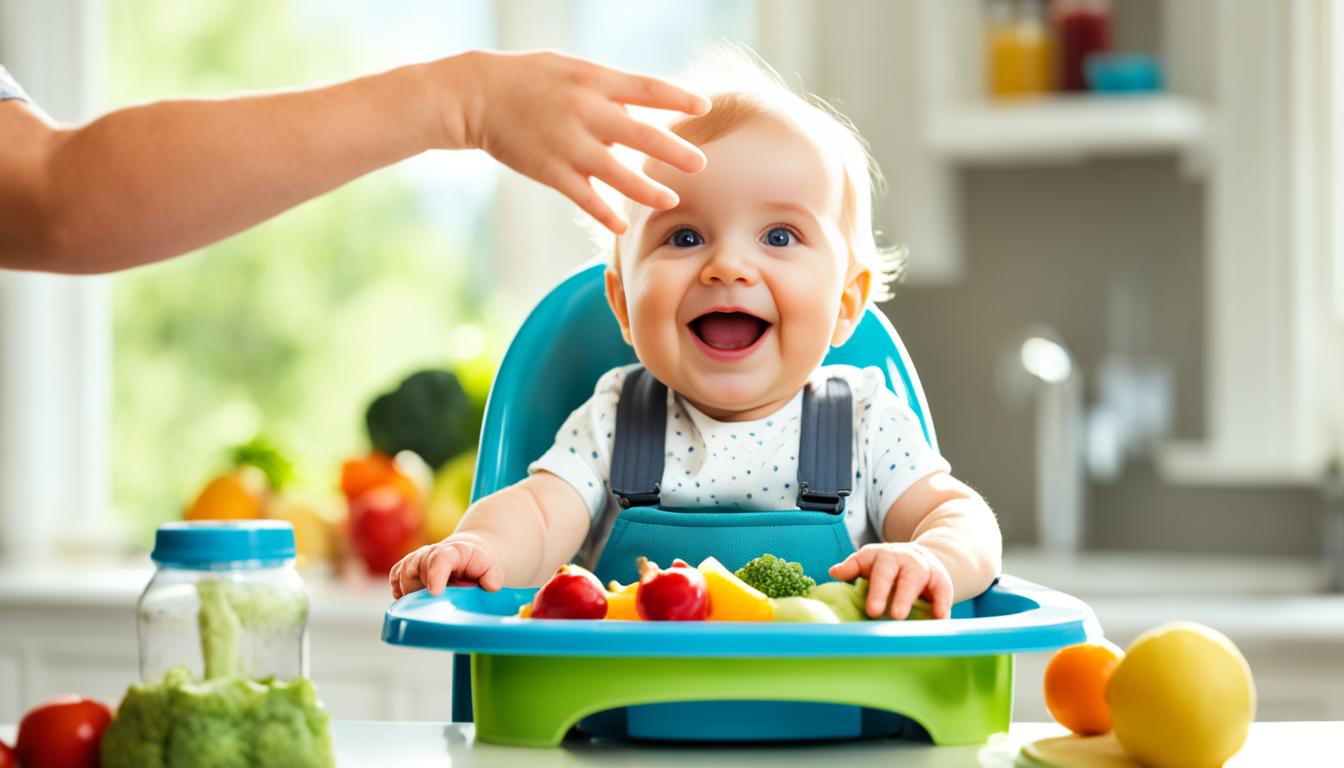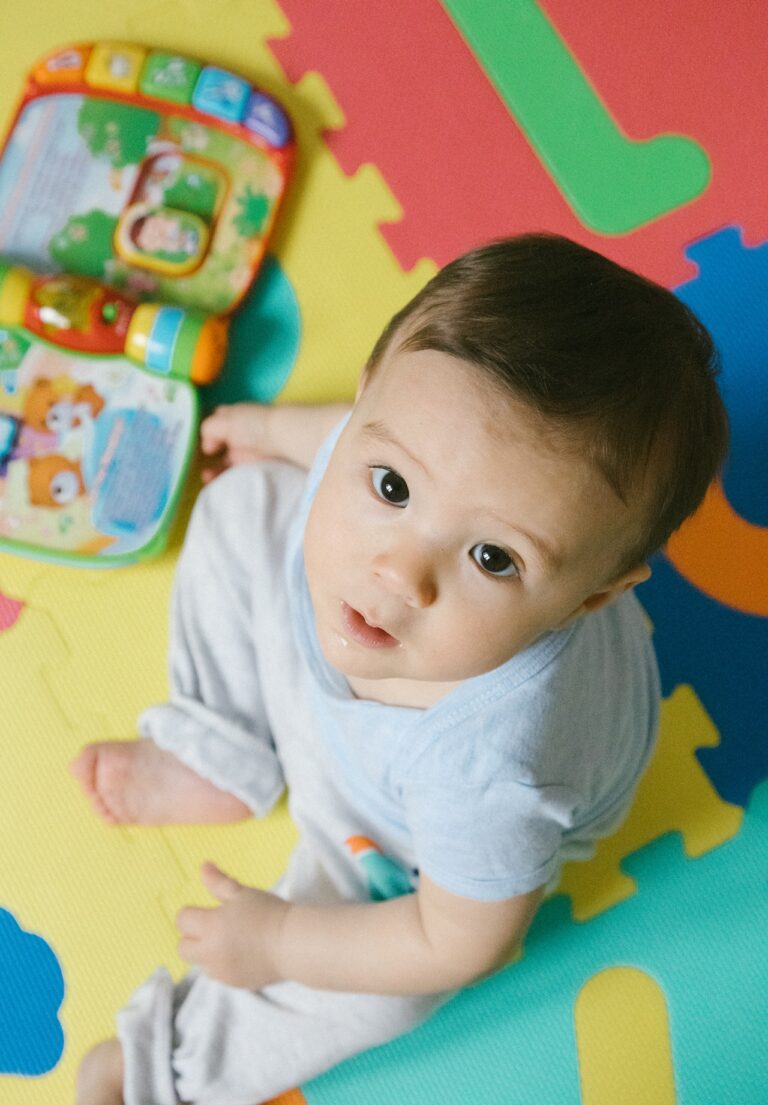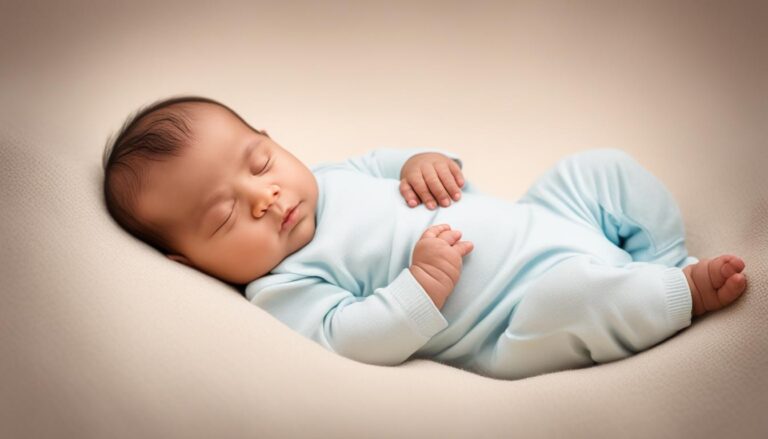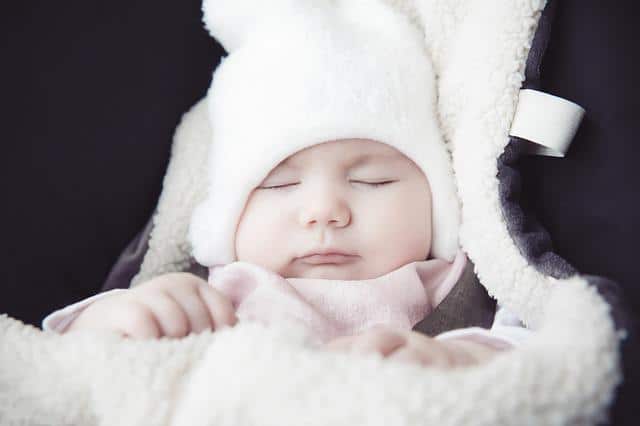Ideal Baby Swing Age Guide for Parents
Welcome to our comprehensive guide on the ideal age for using baby swings. As a parent, you want to ensure that your little one is safe and comfortable while enjoying their swing time. Determining the right age for your baby to start using a swing can be a bit confusing, but don’t worry, we’re here to help you navigate through this important decision.
In this guide, we will explore the significance of baby swing age and provide insights into the different stages of your baby’s development. From newborns to toddlers, we’ll discuss when to transition to a swing for older babies and how to ensure their safety as their motor skills develop. We’ll also delve into the options of outdoor vs. indoor swings and highlight essential features to look for when choosing a baby swing for your little one.
By the end of this article, you’ll have a clear understanding of the age guidelines for baby swings, ensuring you make informed decisions to provide a soothing experience for your precious bundle of joy. Let’s get started!
Key Takeaways:
- Understanding the ideal age for using baby swings is crucial for your child’s safety and comfort.
- There are different types of swings designed for newborns, infants, and older babies/toddlers.
- Transitioning to a swing for older babies should be based on your child’s development and readiness.
- Outdoor and indoor swings offer unique benefits, so consider your space and needs.
- Adhering to the manufacturers’ recommended age and weight guidelines is essential to ensure safety.
Understanding the Significance of Baby Swing Age
When it comes to soothing and engaging your baby, understanding the significance of baby swing age is crucial. Different ages require different features and functionalities in a baby swing to ensure maximum comfort and safety.
Exploring Newborn Swings: Soothing from the Start
For newborns, gentle and soothing motions are essential for creating a calming environment. Newborn swings are designed to mimic the natural movements experienced in the womb, providing a sense of security and comfort. These swings are equipped with features such as a reclining seat, soft padding, and soothing music to help lull your baby into a peaceful sleep. They often have a lower weight capacity to accommodate the smaller size of newborns.
Infant Swings: Engaging Your Growing Baby
As your baby grows, their curiosity and need for stimulation increase. Infant swings are designed to provide both relaxation and entertainment. They typically offer a variety of swing speeds, adjustable seat positions, and interactive toys to engage your little one. The weight capacity of infant swings is higher than newborn swings, allowing them to accommodate the growing weight and size of your baby.
| Baby Swing Age | Key Features |
|---|---|
| Newborns | – Gentle, womb-like motions – Reclining seat – Soft padding – Soothing music |
| Infants | – Adjustable swing speeds – Interactive toys – Multiple seat positions |
Baby Swing Age: Transitioning to Toddlerhood

As your baby grows and starts to reach developmental milestones, their needs and preferences change. This includes their interaction with baby swings. Understanding when to upgrade to a swing designed for older babies is essential for providing them with a safe and enjoyable experience.
When to Upgrade to a Swing for Older Babies
Typically, babies outgrow the swing they used as infants around the age of six months. At this stage, they become more active and require a swing that can accommodate their growing bodies and provide more engaging activities. Look for signs that your baby is ready for an upgrade:
- Your baby shows increased curiosity and seeks more stimulation.
- They have developed better head and neck control.
- They can sit up with minimal support or assistance.
- They seem cramped or uncomfortable in their current swing.
Transitioning to a swing for older babies can provide them with new features and functionalities to support their developmental needs.
Ensuring Safety as Babies Develop Motor Skills
As babies enter the toddlerhood stage, they become more mobile and develop new motor skills. It’s essential to choose a swing that prioritizes safety as they explore their newfound abilities. Consider the following safety aspects when selecting a swing for older babies:
- Stability: Ensure that the swing has a sturdy frame and a wide base to prevent tipping.
- Restraint System: Look for a swing with a secure harness or seatbelt to keep your active toddler safely in place.
- Weight Capacity: Check the swing’s weight limit to ensure it can support your growing child.
- Padding and Cushioning: Opt for a swing that offers sufficient padding and cushioning to protect your toddler from bumps or falls.
- Easy Cleaning: Choose a swing with removable and washable seat covers to maintain cleanliness and hygiene.
By upgrading to a swing designed for older babies and considering their safety needs, you can continue to provide a comforting and secure environment for your growing child.
Choosing Outdoor vs. Indoor Swings for Different Ages
When it comes to selecting the perfect baby swing for your little one, considering whether it will be used indoors or outdoors is essential. Outdoor swings provide a breath of fresh air and the opportunity for your baby to enjoy the sights and sounds of nature. On the other hand, indoor swings offer convenience and are particularly useful during colder or rainy days when going outside may not be feasible.
Each type of swing has its own advantages and considerations based on your baby’s age and developmental stage. Let’s explore the factors you should keep in mind when deciding between outdoor and indoor swings:
- Environment: Outdoor swings allow babies to experience the natural environment, stimulating their senses with the gentle breeze, sunlight, and nature’s sounds. Indoor swings, however, provide a controlled environment free from distractions, making them ideal for babies who get overstimulated easily.
- Weather Protection: Outdoor swings designed for various weather conditions provide additional features like canopies or adjustable covers to shield your baby from harmful UV rays or unexpected rain showers. Indoor swings eliminate the need for weather-related concerns and keep your baby protected in a comfortable, controlled environment.
- Portability: If you love spending time outdoors or frequently visit parks, having a portable outdoor swing can be advantageous. Indoor swings, on the other hand, can be conveniently moved from one room to another, ensuring your baby is always in sight.
- Space: Consider the available space in your home or backyard. Outdoor swings require ample space in the yard, whereas indoor swings can be accommodated in smaller areas like nurseries, living rooms, or bedrooms.
- Age Suitability: Pay attention to the age recommendations provided by the swing manufacturers. Some swings are designed specifically for infants, and their features may vary depending on the age group they target. Always ensure the swing you choose is suitable and safe for your baby’s age.
Based on your lifestyle, preferences, and the unique needs of your baby, the decision between an outdoor or indoor swing will ultimately depend on finding the right balance between the benefits each provides. Now that you understand the considerations involved, you can confidently choose the ideal swing that will best suit your baby’s needs.
Knowing the Age and Weight Limits for Baby Safety
Adhering to Manufacturers’ Recommended Age and Weight Guidelines
When it comes to ensuring the safety of your baby in a swing, it is crucial to follow the manufacturers’ recommended age and weight guidelines. These guidelines are designed to protect your baby from potential accidents and hazards that may arise from using a swing that is not suitable for their age and weight.
Manufacturers carefully engineer swings to provide the right level of support, comfort, and safety features based on a baby’s developmental stage. They take into account factors such as the swing’s construction, size, and motion capabilities. These guidelines serve as a reliable reference to help you select the right swing for your baby’s specific needs.
Age and weight limits are typically provided by the manufacturer as a range. For example, a swing may be suitable for babies aged 0-6 months or with a weight limit of 25 pounds. It is essential to pay close attention to these limits to ensure that your baby remains safe and comfortable while using the swing.
The Risks of Overlooking Swing Capacity Limits
Ignoring swing capacity limits can lead to potential risks and dangers for your baby. If a swing is used beyond its maximum weight capacity, it may compromise the swing’s structural integrity, leading to stability issues or even breakage. This can result in accidents or injuries to your baby.
Similarly, using a swing that exceeds the recommended age limit may expose your baby to inappropriate movements, lack of support, or discomfort. It can also affect the swing’s overall functionality and safety mechanisms, jeopardizing your baby’s well-being.
| Age Range | Weight Limit (lbs) |
|---|---|
| 0-6 months | Up to 25 lbs |
| 6-12 months | Up to 30 lbs |
| 12-24 months | Up to 35 lbs |
Table: Recommended Age and Weight Limits for Baby Swings
It is essential to recognize that swing limits vary across different models and brands. Be sure to carefully read and understand the age and weight limits specified by the manufacturer of the swing you choose for your baby.
By adhering to the manufacturers’ recommended age and weight guidelines, you can provide a safe and comfortable swinging experience for your baby, ensuring their well-being and enjoyment.
The Right Time to Say Goodbye to the Baby Swing
As your child grows, their needs and preferences change. This includes their interaction with baby swings. Recognizing when it’s time to say goodbye to the baby swing is important for their development and safety. Here are some indicators that can help you determine when to transition your child away from the swing:
Recognizing Your Child’s Readiness to Move On from Swings
1. Age and weight: Most baby swings have age and weight limits specified by the manufacturer. It’s essential to follow these guidelines to ensure your child’s safety. If your child has exceeded the recommended limits, it may be time to consider other options.
2. Physical abilities: As your child grows, they will develop their motor skills and become more mobile. If your child can sit up unassisted or show signs of wanting to crawl or walk, it may be an indication that they are ready to explore different play options.
3. Disinterest or boredom: If your child no longer seems engaged or interested in using the swing, it may be a sign that they have outgrown it. They might prefer more interactive toys or activities that provide a higher level of engagement.
Alternatives to Baby Swings for Older Children
1. Activity centers: Activity centers provide a safe and stimulating play environment for older babies and toddlers. They often feature interactive toys, music, lights, and various textures to engage your child’s senses and encourage their physical development.
2. Play mats: Play mats are a versatile option that allows babies to explore and play on a soft surface. They typically include toys and sensory elements that promote motor skills and cognitive development.
3. Outdoor playsets: As your child becomes more active and curious, outdoor playsets can provide them with opportunities for exploration and physical exercise. Swings, slides, and climbing structures are just a few features that can keep your child entertained while enjoying the fresh air.
By understanding the signs of readiness and exploring alternative options, you can ensure your child’s transition from the baby swing is smooth and exciting. Observing your child’s development and responding to their changing needs will help create a safe and engaging environment that supports their growth.
Essential Features to Look for in Baby Swings for All Ages
When choosing a baby swing for your little one, it’s important to consider the essential features that will ensure comfort, safety, and convenience for both you and your baby. Here are some key factors to look for:
- Adjustable Seat Positions: Look for a swing that offers multiple seat positions, allowing you to find the perfect angle for your baby’s comfort.
- Swing Speed Options: Different babies have different preferences when it comes to swing speeds. Opt for a swing with adjustable speed settings so that you can find the ideal motion that soothes your baby.
- Music and Sound: Many baby swings come with built-in music or sound options to help calm and entertain your little one. Look for a swing with a variety of melodies or white noise sounds.
- Removable and Washable Seat Cover: Babies can be messy, so it’s important to choose a swing with a removable and machine washable seat cover for easy cleaning.
- Safety Straps: Ensure that the swing has secure safety straps to keep your baby safely in place. Look for adjustable straps to accommodate your baby’s growth.
- Compact and Portable Design: If you plan to move the swing around your home or take it with you on trips, consider a swing that is lightweight and easy to fold or disassemble for convenient transport and storage.
- Battery Life: Check the battery life of the swing to ensure it will last for extended periods without needing frequent battery replacements.
By considering these essential features, you can find a baby swing that meets your baby’s needs and provides a soothing and enjoyable experience for them. Remember to always prioritize safety and comfort when choosing a baby swing.
Conclusion
In summary, this baby swing age guide is designed to help you make informed decisions for your baby’s soothing experience. By understanding the significance of baby swing age, you can choose the right swing for your little one’s developmental stage.
Summarizing the Baby Swing Age Guide
From newborn swings that provide gentle motion and soothing sounds to infant swings that engage growing babies with toys and activities, there are options available for every stage. As your baby transitions to toddlerhood, it’s important to know when to upgrade to a swing for older babies and ensure safety as they develop motor skills.
When it comes to choosing between outdoor and indoor swings, consider the advantages and limitations for different ages. You should also familiarize yourself with the age and weight limits recommended by manufacturers to ensure your baby’s safety. Overlooking swing capacity limits could put your little one at risk.
Finally, recognizing your child’s readiness to say goodbye to the baby swing is crucial. This guide provides insights into alternatives for older children who are ready to move on. Remember to consider essential features when selecting a swing, such as safety harnesses, adjustable settings, and music options.
Making Informed Decisions for Your Baby’s Soothing Experience
By following this baby swing age guide, you can create a soothing and enjoyable experience for your baby at every stage of their development. Understanding the significance of baby swing age, adhering to recommended guidelines, and recognizing when it’s time to move on will contribute to your baby’s overall comfort and well-being.
FAQ
What is the ideal age range for using a baby swing?
The ideal age range for using a baby swing depends on the manufacturer’s recommendations. However, most baby swings are suitable for newborns up to around 6 months of age.
Can I use a baby swing for my newborn?
Yes, there are baby swings specifically designed for newborns. These swings provide gentle motions and a secure environment to soothe and comfort your newborn.
Is there a specific baby swing for infants?
Absolutely! There are baby swings designed specifically for infants. These swings usually have adjustable features such as seat recline and swing speed to cater to the needs of growing babies.
When should I upgrade to a swing for older babies?
It’s generally recommended to switch to a swing for older babies when your little one starts showing signs of rolling over or sitting up independently. This is usually around 6 months of age.
How can I ensure the safety of my baby as they develop motor skills in a swing?
Always ensure that the swing has a safety harness to secure your baby in place. Additionally, make sure there are no toys or objects that could pose a choking hazard within your baby’s reach.
Should I choose an outdoor or indoor swing for my baby?
The choice between an outdoor or indoor swing depends on your preferences and the climate in your area. Outdoor swings are great for enjoying fresh air and sunshine, while indoor swings offer convenience and can be used year-round.
What are the age and weight limits for using a baby swing?
It’s important to follow the manufacturer’s recommended age and weight guidelines for your baby swing. These limits ensure your baby’s safety and prevent any potential accidents due to exceeding the swing’s capacity.
What are the risks of overlooking swing capacity limits?
Overlooking swing capacity limits can result in safety hazards, such as the swing breaking under excessive weight or imbalance. This could potentially lead to injuries for your baby. Always ensure you stay within the recommended limits.
When should I stop using a baby swing?
You should stop using a baby swing when your child outgrows the weight and age limits set by the manufacturer or when they show signs of being ready to move on from swings, such as attempting to climb out or showing more interest in independent play.
What are some alternatives to baby swings for older children?
As your child grows older, you can explore alternatives to baby swings, such as activity centers, play mats, or bouncers that provide entertainment and help develop their motor skills.
What are some essential features to look for in baby swings for all ages?
Important features to consider include adjustable swing speeds, soothing music or nature sounds, seat recline positions, safety harnesses, and removable toy bars for entertainment.
What is the goal of this baby swing age guide?
This baby swing age guide aims to provide parents with information on choosing the most suitable baby swing based on their child’s age and developmental milestones. It offers guidance to ensure a safe and soothing experience for both babies and parents.
How can I make informed decisions regarding my baby’s soothing experience?
By understanding your baby’s age and specific developmental needs, and considering the features and safety guidelines provided by manufacturers, you can make informed decisions that prioritize your baby’s well-being and comfort.

